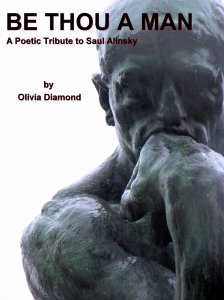Continuing the style I began with Women at the Well and Land of the Four Quarters, in this collection of narrative poems I give voice in dramatic monologues to the Moriscos, who from 1492 to their final expulsion from Spain in 1609, struggled to preserve their culture and language within a dominant Christian society. Conversion did not spare them from this fate. Some of the characters are historical; some of them imagined and a few are characters taken from Miguel Cervantes’s monumental novel Don Quixote in two parts, which appeared at the time the final solution to the Morisco problem would be implemented. In history there are many examples of ethnic cleansing; this is but one of them. Because the policy continues around the world today, I was impelled to write about the Moriscos.
In Al-Andalus, I create an English version of the Arabic poetic form called the muwashshah. Here is one of them in which the Alhambra speaks:
Arabesques and colored tiles tell my tale.
The vanished Moor built on a grand scale.
Songs once sung do not die when done
But linger in the air to arise like the sun.
The silence whirs as if silk is being spun
In graceful script and architectural detail
That Ferdinand and his men dare not assail.
Enclosed in alcoves rhythms of the lute
Pulsate accompanied by the plaintive flute.
Banished the kohl-eyed beauty but not mute.
In the Alhambra yet is heard the houri wail
Though her plea to stay is to no avail.
The silence holds sad melody like a bee
Preserved in amber, its buzz in quiet key
Resounds beyond the present century.
Those who came before leave a pollen trail
Though their time was filled with constant travail.
My name corrupts the Arabic word for red
That came out as Alhambra when it’s said
By Spaniards drinking of our fountainhead.
Within these halls although my voice be frail
Those well-tuned will hear a whispered tale.
Carlos the King spent a six-month honeymoon
Ensconced in my walls, like a girl in a swoon
Applauding the dances to tambourine tune.
Granada, tu tierra está llena de lindas mujeres
Is the Spanish song my walls echo nowadays.
In 1492 the Spanish Jews were first given the royal ultimatum to either convert to Christianity or suffer forced deportation. In 1523, Carlos V reneged on the terms of the 1492 surrender, which granted religious and cultural freedom to the Moslems of Granada, serving them the same ultimatum the Jews had received. Mass baptisms of the Moors ensued. The prohibitions against wearing Moorish clothing, practicing Islamic customs and speaking Arabic were suspended for forty years, purportedly to allow for cultural and religious assimilation. Under Philip II the mandates were re-imposed resulting in the rebellion of the Moriscos in the War of the Alpujarras 1568-1570. After the defeat of the Moriscos, Philip ordered the dispersal of the surviving Moriscos to other regions of Spain—a strategy to prevent a concentration of Moriscos that would be capable of armed revolt again. Throughout the sixteenth century the converted Moriscos were suspect. Religious and secular leaders feared they were a third column within the country conspiring with the Ottoman Empire to reconquer Spain for the Islamic world. After decades of debate and suspicion, Philip III ordered the final expulsion of Spain’s Moriscos in 1609. Miguel Cervantes de Saavedra witnessed this process. Indeed, he was writing the second half of El Ingenioso Hidalgo Don Quijote de La Mancha during this removal and must have seen caravans of Moors under guard being marched to the sea ports for transport to North Africa.
In recent history Moslems have returned to Spain. They arrive in boats from North Africa. It remains to be seen whether in this century the efforts at peaceful co-existence will succeed. Can an amalgamation of cultures result?

